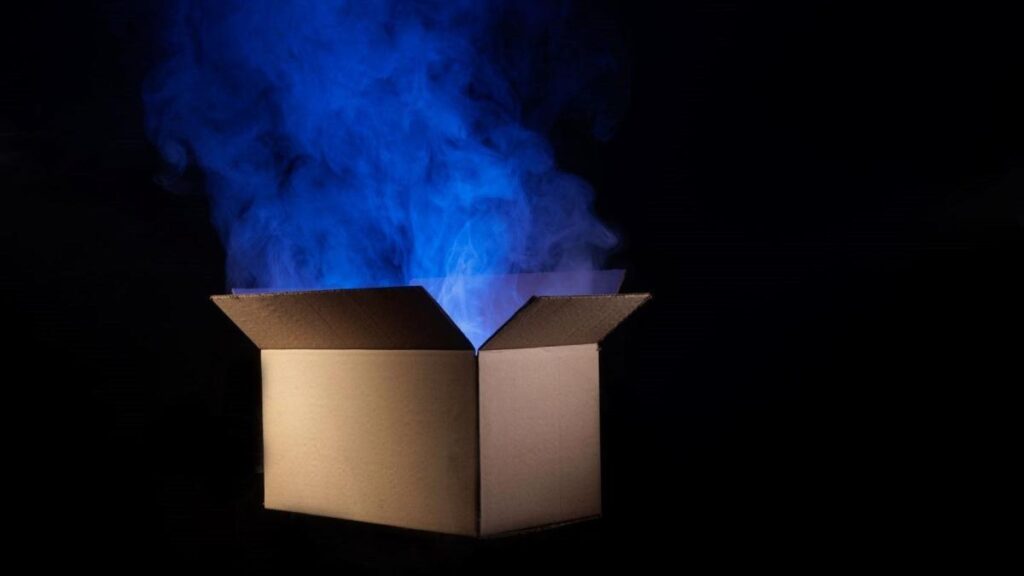In a world where there is an increasing focus on sustainability, misconceptions about luxury packaging persist: can packaging be sustainable and still provide a premium experience for consumers? The simple answer is: yes.
Misconceptions about sustainability can hinder brands from progressing and innovating, especially in the luxury sector where both aesthetics and ethics are crucial. First impressions matter most, and this means telling your brand story through your packaging. But being sustainable doesn’t mean compromising on quality.
James Cropper is committed to dispelling misconceptions and showing that marrying sustainability and luxury is possible, and indeed advantageous. With leading brands such as Maison Ruinart, Maison Perrier-Jouët and Bruichladdich already embodying the potential of sustainable luxury packaging, it is our mission to educate and serve them through our innovative, award-winning designs.
To aid in this quest, we have uncovered eight of the most common misconceptions.
Myth 1: The paper industry is run unethically
European forests are now 30% larger than they were in the 1950s. Forests act as the planet’s main carbon sink and play a key role in mitigating climate change. Sustainable forestry practices enable the paper industry to act ethically and environmentally responsible, contributing positively to forest management and conservation efforts.
In a first for the whisky industry, James Cropper has produced colour wraps for The Bruichladdich Eighteen and The Bruichladdich Thirty using 100% green energy and wood pulp sourced from sustainably managed forests.
The wrap is moulded to the shape of Bruichladdich’s unique optimised glass bottles and is not only the definition of conscious modern luxury, but is also 100% recyclable for every household.
Myth 2: Paper only grows on trees
There are diverse fiber sources, including recycled fibers, and the great thing is that using recovered fibers helps keep waste from going to landfills. At James Cropper, we can make paper from a variety of resources that many people would never imagine. We harvest fibers from coffee cups, office waste, and even reclaimed denim. This approach not only supports sustainability, but also reduces the strain on natural resources. In 2023, we partnered with luxury retail customers to create bespoke packaging solutions incorporating molded and recycled fibers for over 16 million shopping bags.
Myth 3: It’s hard to find diverse fiber streams
A stable fiber supply is a reality. Our comprehensive understanding of fiber, developed over 179 years in the paper industry, ensures we have a reliable and secure source of supply. This stability allows us to produce consistently high-quality paper, helping to regenerate natural systems for current and future generations.
The story continues
Myth 4: Recycled fiber is the same as dirty paper
Recycled Paper is Clean Paper. The myth that recycled paper is dirty or of poor quality is outdated. Today’s recycled paper has the same neat and clean look as virgin fiber paper, but with the added benefit of being environmentally friendly.
Myth 5: Foil can’t be recycled
Foil packaging is recyclable: cold and hot foil applied at up to 80% coverage is repulpable, allowing the packaging to be recycled over and over again, dispelling the notion that a luxury finish must come at the expense of recyclability.
Myth 6: Recycled fibers are not strong or stable
Recycled fibers are designed with commercial environments in mind. Our paper will withstand rigorous use and maintain its reliability in both strength and appearance. Whether you want a clean white, atmospheric black, or a custom shade, recycled paper can deliver it.
Selfridges provides used cups from its retail stores and offices to James Cropper where they are upcycled through an award-winning Cupcycling process into beautiful paper for the stores’ iconic yellow shopping bags – a completely unique closed-loop recycling solution that demonstrates a collaborative commitment to proactively tackling environmental issues.
Myth #7: Recycled materials don’t produce the same results
FibreBlend models incorporate key elements of a circular economy system, perfectly balancing virgin and recycled fibers to deliver both performance and sustainability. This innovative approach ensures that aesthetics and functionality are not compromised by the use of recycled materials.
Coty recognised the perfect finish when it chose recycled fibre for the packaging of Chloé Eau de Parfum Rose Naturel. Made with 40% recycled fibre, the paper gives post-consumer waste a second life, blending it with fresh fibre from sustainable forest sources to create a beautiful finish that is environmentally conscious.
Myth 8: It’s impossible to build an ethical supply chain
It’s possible to take ownership of your story all the way back to the source. Brands can uphold their environmental commitments by using wood pulp certified to FSC® or PEFC® standards from sustainably managed forests.
By the end of 2024, EU countries are expected to have producer responsibility schemes for all packaging. By 2030, 100% of all packaging should be recyclable. These regulatory changes highlight the increasing need for brands to act now and comply with these new laws that will help reduce waste.
In the UK alone, around 12 million tonnes of packaging waste is thrown away every year. This cannot continue.
The time for excuses is over. Consumers are increasingly choosing products based on eco-friendliness, and brands are looking for low-carbon, renewable and bio-based solutions. Together, we can make a big difference by creating everyday textiles that perfectly blend performance, sustainability and aesthetic appeal. Let’s pioneer sustainable luxury packaging and create a future where ethics and elegance coexist seamlessly.
About the author: Kate Gilpin is Product Manager for Luxury Packaging.
At James Cropper, a global paper manufacturer.
“Busting the Myths About Sustainable Luxury Packaging” was originally created and published by Packaging Gateway, a brand owned by GlobalData.
The information on this site is published in good faith and for general information purposes only. It is not intended to amount to advice on which you should rely and we make no representations, warranties or guarantees, express or implied, as to its accuracy or completeness. You should always obtain professional or specialist advice before taking, or refraining from, any action on the basis of the content on this site.



